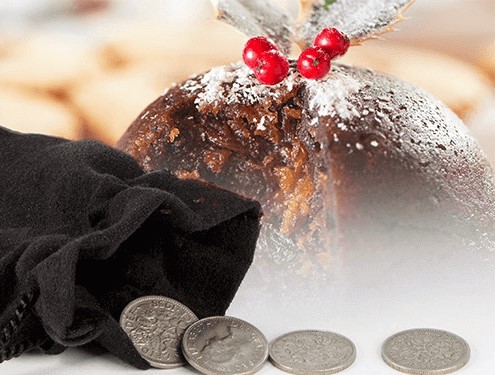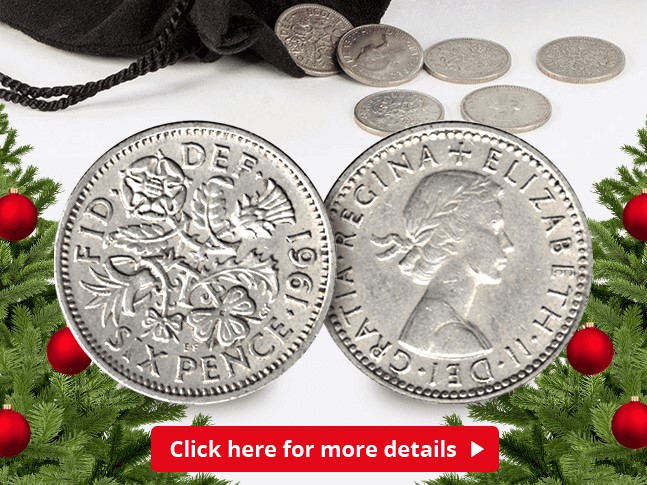Posts Tagged ‘Coins’
50 years of The Royal Mint at Llantrisant… The move to decimalisation
Standing strong for over 1,100 years throughout Britain’s wars, political upheavals, social and economic progress and technological and scientific advances, The Royal Mint’s history can be traced back through our country’s coinage.
But it was on the 17th of December 50 years ago that The Queen herself opened the new site for The Royal Mint, which was moved to a purpose-built site in Llantrisant following 157 years at Tower Hill, London.
This was the first time since its inception that The Royal Mint had been based outside of London, and marked an incredibly important moment in the history of our coins.

The Queen opening the new Royal Mint in Wales. Credit: royalmintmuseum.org.uk
The move to Llantrisant
In 1966 it was announced that Britain would adopt a new decimal currency. This meant that hundreds of millions of new coins would need striking and Tower Hill simply didn’t have enough space to cope with this demand and so the decision was made to find a new location for The Royal Mint.
Llantrisant made it onto the shortlist of the top 7 locations, and as James Callaghan (Chancellor of the Exchequer, Master of the Mint and an MP for Cardiff) supported a move to Wales, Llantrisant was chosen for the big move.

Staff from Tower Hill visiting the new Royal Mint site in Llantrisant. Credit: royalmintmuseum.org.uk
Britain’s new Mint
The announcement was made in 1967 and construction soon began on the new site. For the Llantrisant area, the move meant more work and a regeneration of the town, as well as adding to the sense of history and tradition. It was estimated that the move would provide 10,000 jobs to South Wales.
It was in 1968 that the site was officially opened by Her Majesty The Queen when she switched on the coining presses to begin production of decimal bronze coins.
Llantrisant was built to house the most advanced coining machinery in the world and have a larger capacity than any other mint in Europe, necessary to cope with the amount of new coinage needed.
When the site opened, the circulating coin presses could strike up to 200 coins per minute, however the latest generation of presses today strike around 750 coins per minute!
Decimalisation of Britain’s coins
The 15th of February 1971 is known as the day that Britain “went decimal”.
Whilst this was the official ‘Decimal Day’, three years before this, the new 5p and 10p coins were actually introduced. These coins were the same size and value as the existing one and two shilling coins to make the transition easier for the British public.
It was in 1969 that the first seven sided coin – the 50p – was introduced to replace the 10-shilling note as a more economical alternative and then finally, on Monday 15 February 1971, the transition was complete when the half penny, 1p and 2p coins were also introduced.
The new Mint at Llantrisant successfully transformed hundreds of years of everyday currency from 12 pennies to the shilling and 20 shillings to the pound, to the new pound made from 100 new pence.

Royal Mint coin production plant. Credit: dailymail.co.uk
Today the Royal Mint is the market leader and the largest single supplier of plated coins and blanks in Europe. They can produce 90 million coins and blanks a week – that’s almost 5 billion coins a year!
And all this has been made possible thanks to the advanced facilities at Llantrisant, as pictured above, without which the move to decimal coinage simply wouldn’t have been possible.
Own this Historic Royal Mint anniversary DateStamp™
To mark the move of The Royal Mint to Llandistrant, you have the opportunity to own the Royal Mint in Wales 50th Anniversary DateStampTM.
Featuring the 2016 Wales £20 coin with the iconic Welsh dragon design, and postmarked 17th December 2018, exactly 50 years since The Royal Mint moved to Wales.
Stir Up Sunday – the story behind the numismatic Christmas tradition
There are countless coins thought to be lucky, but there’s one lucky coin in particular which comes to my mind at this time of year…
The much-loved lucky Sixpence has been a part of Christmas traditions for generations and as this weekend marks ‘Stir-up Sunday’, we take a look back at the tradition that harks back to Victorian times.

Christmas tradition
Stir Up Sunday is celebrated five weeks before Christmas Day, when the whole family would gather together to stir the Christmas pudding and make a special wish for the year ahead.
The Christmas pudding itself is said to have been introduced to Britain by Prince Albert, husband of Queen Victoria and traditionally, when making the pudding, a sixpence would be added to the mix.
This was said to bring wealth and good fortune in the coming year if you found the coin in your portion on Christmas day.
It’s no surprise that collectors love these coins so much. The 1961 Sixpence below can be seen featuring an entwined design of a flora, leek, rose, thistle, and shamrock, the sixpence has long been a token of good luck so is an original and thoughtful gift for a friend or relative.

The Sixpence was first minted during Edward VI’s reign in 1551 and was struck in silver up until 1947. From this date onwards the coin was struck in cupronickel.
But there is one particular Victorian Sixpence that collectors hunt for…
The 1887 Withdrawn Silver Sixpence
In 1887, new coin designs were to be issued for Queen Victoria’s Golden Jubilee. Surprisingly, the Silver Sixpence shared the same design as the Gold Half Sovereign.
Of course, it didn’t take long for some crafty opportunists to start coating the Silver Sixpence in gold paint after realising they could easily be passed off as the far more valuable Half Sovereign.
The authorities hastily withdrew the Sixpence and a quick redesign took place, with the new 1887 Sixpence reverting to a design similar to previous years, with a crown at the top of the design and a wreath around the sides, with “SIX PENCE” written across the middle of the coin.

1887 Withdrawn Silver Sixpence
Nobody can be sure how rare these coins are, as mintage figures only record how many Sixpences were issued each year, rather than individually listing each design type and, because there were three different designs of the Sixpence in 1887, it’s impossible to know how many withdrawn coins survived.
One thing is certain though, the withdrawn coin is the Sixpence collectors hunt high and low for.
So whether you’re looking to hunt down a rare Sixpence for your collection, or if you’re preparing your Christmas pudding ready for Stir Up Sunday, we wish you the very best of luck this festive season.
Secure a special set of six Sixpences
The Sixpence has long been a token of good luck so is an original and thoughtful gift for a friend or relative.
What’s your favourite 50p coin design of the year 2018?

We’re on the hunt for the best Coin Design of 2018 as part of the 2018 Change Checker Awards and we need your help! With over 50 new coins released this year, we’ve decided to shortlist the coins by denomination and then determine one overall winner from the top 10p, 50p, £2 and £5 coins as voted by Change Checkers!
50p Coins
Seven 50p coins have been released this year, including the third series of Beatrix Potter 50ps and the first ever UK Paddington 50p coins!
So which 2018 50p coin do you think deserves to be named the best of 2018?
Cast your vote now using the poll at the bottom of the page and find out more about the coins that have been released this year below!
Representation of the People Act 50p

In 2018 The Royal Mint released a 50p to commemorate the 100th Anniversary of The Representation of the People Act being passed. The 50p was designed by Stephen Taylor and features five men and women in line to vote, with a woman triumphantly raising a voting card.
Peter Rabbit 50p

The 2018 50p coin is the third UK coin to feature the much-loved children’s character Peter Rabbit. Struck by The Royal Mint, this is the first coin in the third series of Beatrix Potter 50ps which proved to be extremely popular with coin collectors in 2016 and 2017. Designed by Emma Noble, the reverse features Peter Rabbit munching on radishes.
Flopsy Bunny 50p

The 2018 Flopsy Bunny 50p coin has been issued to celebrate one of Beatrix Potter’s most loved children’s tales, ‘The tale of Flopsy Bunny’. This is the first UK coin to feature Flopsy Bunny and has been designed by Emma Noble to feature the adorable character on the reverse of the coin.
Tailor of Gloucester 50p

The 2018 Tailor of Gloucester 50p coin has been issued to celebrate one of Beatrix Potter’s most loved children’s tales, ‘The Tailor of Gloucester’ and is the first UK coin to feature The Tailor of Gloucester. As part of the third series of Beatrix Potter 50ps, Emma Noble designed this coin to feature The Tailor of Gloucester on the reverse.
Mrs Tittlemouse 50p

The 2018 Mrs. Tittlemouse 50p coin has been issued to celebrate one of Beatrix Potter’s most loved children’s tales, ‘The Tale of Mrs. Tittlemouse’ and is the first UK coin to feature Mrs. Tittlemouse. Designed by Emma Noble for the 2018 Beatrix Potter series, the design features Mrs Tittlemouse on the reverse of the coin.
Paddington at the Station 50p

To celebrate the iconic 60th anniversary of Michael Bond’s novel “A Bear Called Paddington”, The Royal Mint issued potentially the most sought-after 50p ever. Designed by David Knapton and based on the modern adaptation from the CGI-live action movie, this coin features Paddington on his suitcase in front of the station.
Paddington at the Palace 50p

This lovely design by David Knapton is the second coin issued by the Royal Mint in the 2018 Paddington series. These coins represent the first time Paddington has featured on official UK coinage and are definitely highly collectable and this particular design features Paddington waving a Union Flag outside Buckingham Palace.
The Snowman 50p

To celebrate the festive season, this coin has been issued by The Royal to mark the 40th anniversary of the publication of Raymond Briggs’ much-loved festive tale The Snowman™. Designed by Natasha Ratcliffe, the new coin depicts the boy and the snowman flying through the night sky above Brighton Pier.
With so many beautiful coins issued this year it certainly makes picking a winner incredibly tough, but now’s the time for you to cast your vote!
The winning 50p will then be entered into our Coin Design of the Year vote as part of the 2018 Change Checker Awards, alongside the top 10p, £2 and £5 coins from 2018 to determine which coin should be crowned the overall winner!
The voting has now closed and the results can be found below:

It’s now time for you to vote for your overall winner, shortlisted from Change Checker’s favourite A-Z 10p, 50p, £2 and £5 coin of the year.
View our full range of CERTIFIED BU 50p coins here >>



